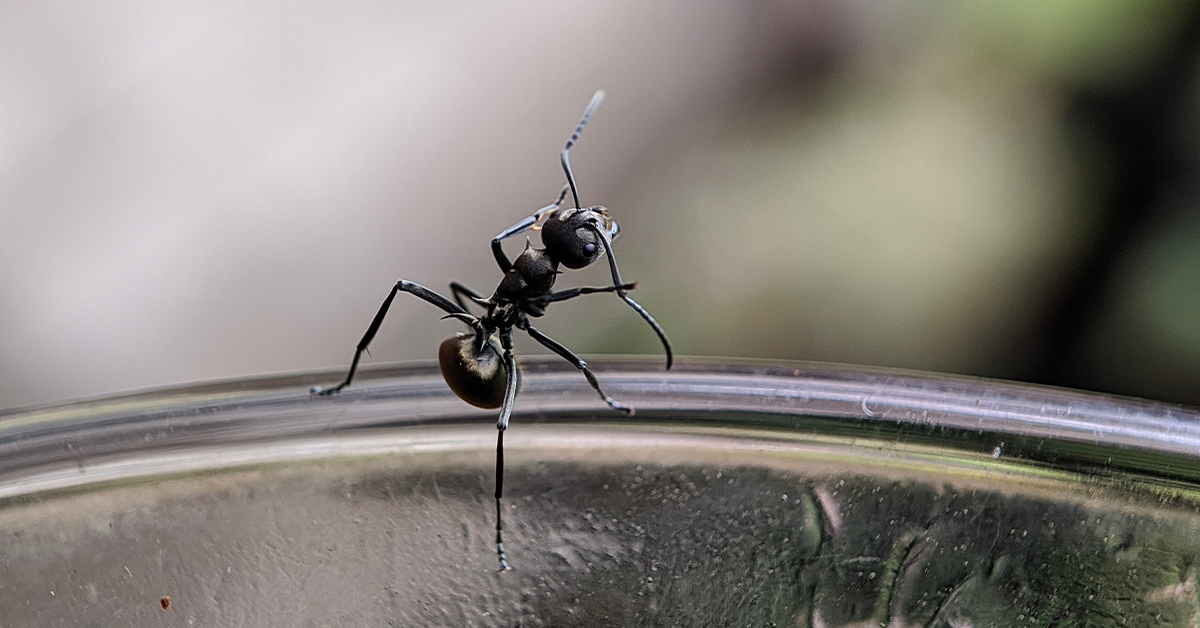When it comes to common pests found in East End homes at this time of year, seeing a few house ants may seem like no big deal. They don’t bite and they won’t chew through your walls. They’re easy to dismiss or ignore. But are they really as harmless as they might seem?
The problem with ants is that where there are one or two, there are almost certainly dozens more – possibly hundreds – hidden from view. Odorous house ants are one of the species that you may encounter in late spring and early summer. Less than an eighth of an inch long, odorous house ants are black or brown, and have an oddly shaped mid-section. Their most noticeable trait is that, when crushed, they emit a highly unpleasant scent (often likened to that of rotting coconut) hence their name.
Are Odorous House Ants Bad?
Like other types of common house ants, odorous house ants can cause illness by tracking bacteria into human and pet food sources. They also cause unpleasant smells in your home and can aggravate asthma and allergies.
Do Odorous House Ants Cause Damage?
While odorous house ants aren’t destructive, an infestation can cause unpleasant smells that penetrate drywall, carpet, and other permeable surfaces. Odorous house ants also can attract secondary predators that will damage your home to gain access to the ants.
What Attracts Odorous House Ants?
Like most pests, odorous house ants seek out sources of food, water, and shelter. They are particularly drawn to sugary or sticky foods, and to sources of moisture like leaking pipes, damp drywall or insulation, or even recently watered houseplants.
Odorous house ants are also attracted by pheromone trails left by other members of this smelly species. These trails telegraph information regarding nesting sites and the location of food sources… and soon an entire colony may gravitate toward them.
What Repels Odorous House Ants?
Once odorous house ants have left a pheromone trail, it becomes much more difficult to get rid of them. DIY sites recommend a mix of white vinegar and water to cover these trails and repel additional ants, but its effectiveness is rather limited. This is why we suggest hiring ant control professionals who know the best places to bait and trap pests, where to find signs of an infestation, and other tools to get rid of or minimize your ant troubles.
Are Odorous House Ants Hard to Get Rid Of?
Any kind of ant infestation can be difficult to remove. This is because of the sheer number of ants in any given area and due to their tendency to swarm. Once you see more than just one or two ants, you are in danger of developing a full-blown infestation. Large colonies can form in your home – typically inside your walls, under floorboards, or under sinks and appliances.
How Do Exterminators Get Rid of Ants in Walls?
If there is access to wall voids, pest control professionals use insecticide sprays, liquids, dusts, foams, foggers, or some combination of these to rid your home of hidden ant colonies. Some products are applied directly on sites where ants are present, while others are baits that are carried back to nesting sites to eliminate the colony.
We are happy to discuss the options to determine which method is best for you and your family.
Twin Forks Is Your Ant Removal Specialist
Our team of professionals at Twin Forks Pest Control® has over 20 years of expertise in removing ants and other indoor pests from Long Island homes and businesses. Call us today for a free estimate.

